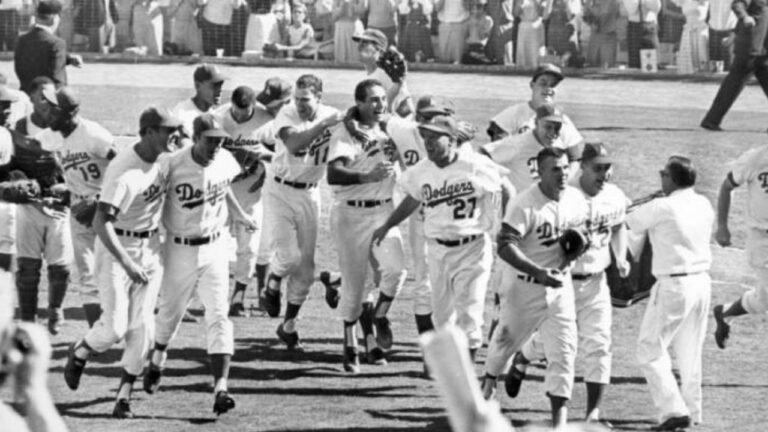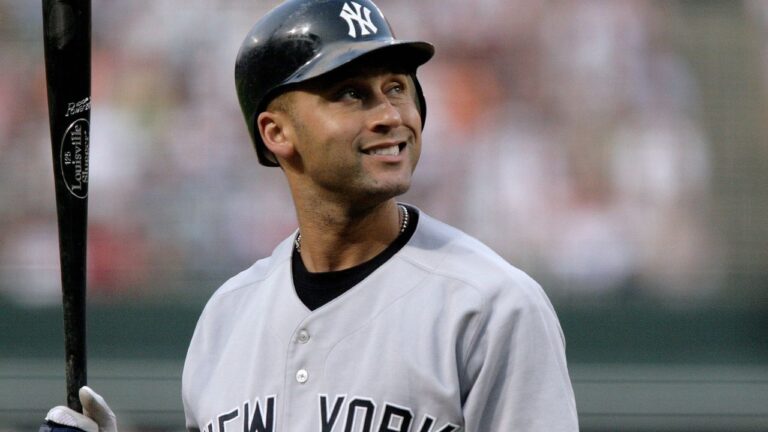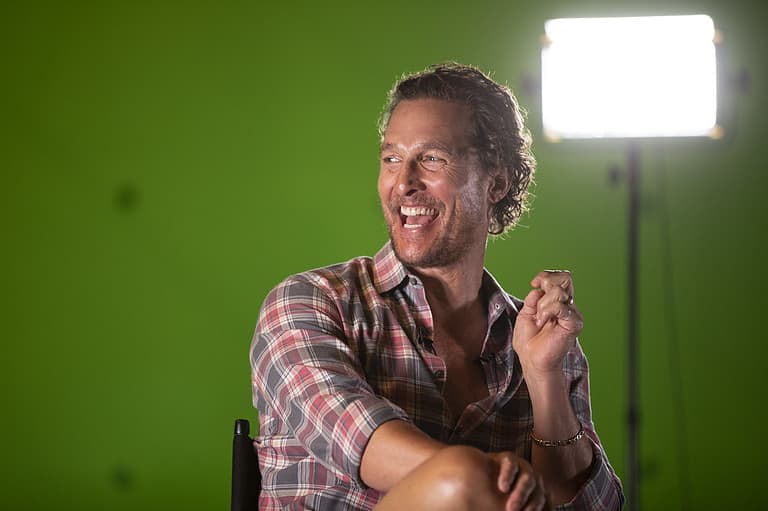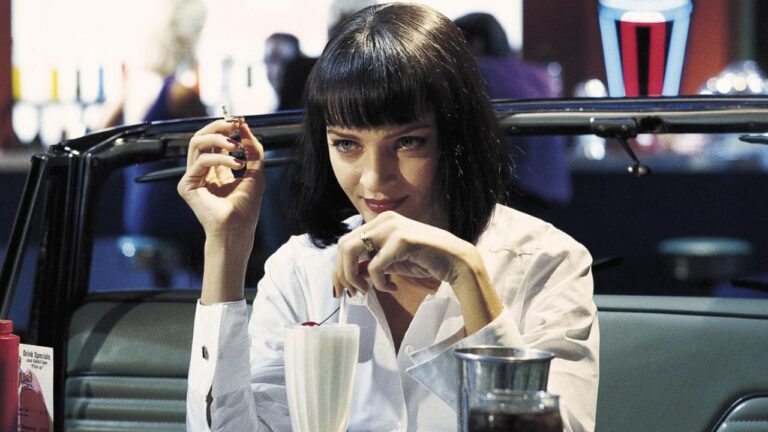The Master of Suspense – The Hitchcock Influence in Modern Cinema
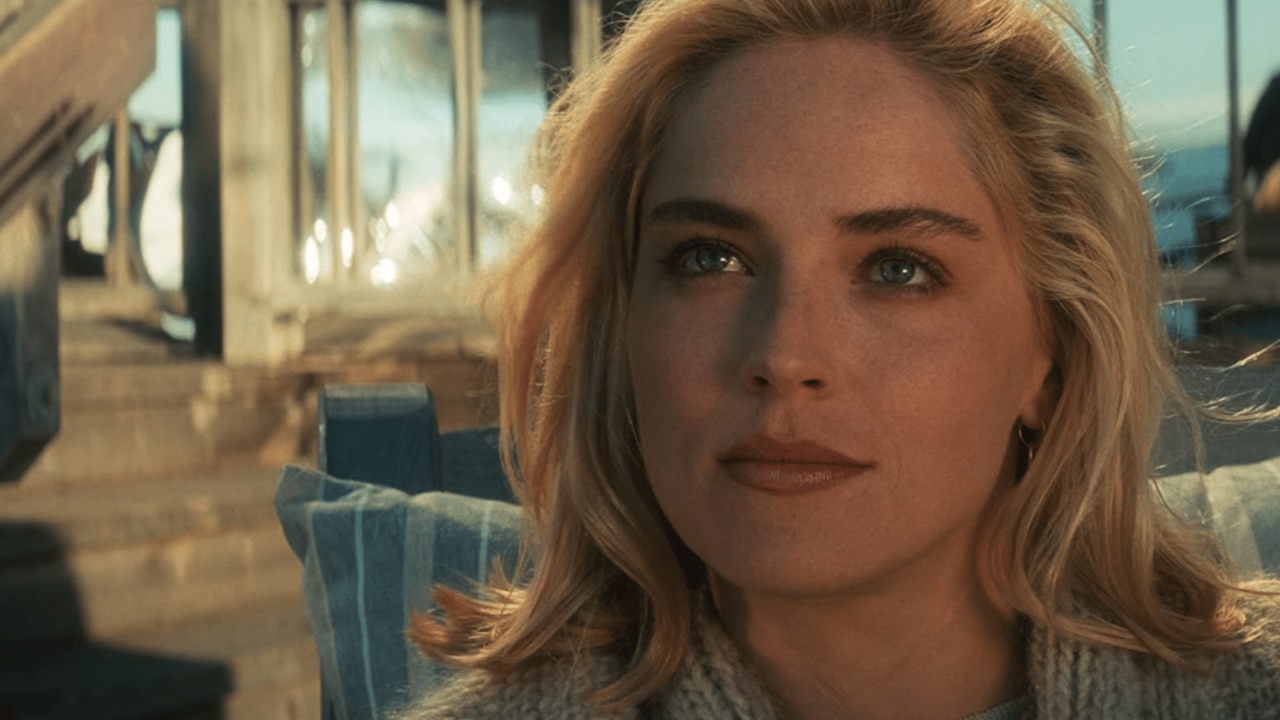
As one of the greatest film directors of all time, Alfred Hitchcock’s influence still reverberates in today’s cinema landscape. In a career spanning six decades, his filmography lists classic after classic, like The Lady Vanishes, Rebecca, Strangers on a Train, Rear Window, The Birds, North by Northwest, Vertigo, and the grandfather of the slasher film Psycho. Critics label him “the master of suspense” for a reason.
Long after Hitchcock’s death in 1980, his shadow still looms large in the entertainment world. Whether remakes or sequels to his iconic pictures or filmmakers imitating his style and tone, looking for the Hitchcock influence in the last few decades of cinema is fascinating.
If imitation is the sincerest form of flattery, these movies give Hitchcock the highest compliment imaginable.
A Perfect Murder (1998)

This loose remake of Hitchcock’s 1954 classic Dial M for Murder didn’t make much of a splash at the box office. The original starred Ray Milland as a famous Tennis Star who arranges the murder of his unfaithful wife, played by Grace Kelly, so that he can inherit her fortune. The film’s claim to fame was the attempted murder sequence, shot in 3D, where Kelly uses a deadly pair of scissors to fend off her attacker.
The 1998 update, retitled A Perfect Murder, stars Michael Douglas in the Milland role, who plans the murder of his trophy wife, with Gwyneth Paltrow following in Kelly’s footsteps. Director Andrew Davis lenses the remake with elegance and style, keeping the basic outline of the original intact, although adding a few new twists. Viggo Mortensen makes a smoldering turn as Paltrow’s lover, who gets blackmailed into committing the murder (and who would appear in the controversial Psycho remake later that year).
Psycho II & III (1983 & 1986)

Never make a sequel to a beloved classic, especially to one of the most iconic Hitchcock pictures of all time. But filmmaker Richard Franklin, working with screenwriter Tom Holland, did just that. The duo stunned audiences by crafting a tense, dramatic, and frightening follow-up to the original Psycho.
Set 22 years after the original, the film follows Norman Bates as he’s released from psychiatric care and fully rehabilitated. Norman moves back into his creepy mansion, attempting to live a quiet life of solitude. But Lila Crane (a returning Vera Miles), the sister of shower slain victim Marion, sets out to prove that Norman is still a murdering psychotic. Things get more complicated when Norman starts to receive phone calls from none other than Mother.
Psycho II, which has no relation to Robert Bloch’s 1982 novel, had no right to be as good as it turned out to be. Much of the sequel’s success hinges on Anthony Perkins’s sympathetic performance of an older Norman, clinging to his sanity as he faces the consequences of his past. Vera Miles matches Perkins’s performance beat for beat, determined to avenge the murder of her old sister.
Sadly, Psycho III plays like a typical slasher, returning Norman to his “a boy’s best friend is his mother” ways. Reportedly, Perkins only agreed to return if he could also direct. Psycho III has its moments, but the third installment lacks the skill that director Franklin and writer Holland brought to the sequel.
Basic Instinct (1992)

Provocative director Paul Verhoeven has made a career out of shocking critics and audiences, all with some borrowed Hitchcock influence. He practically opened the taboo envelope with the release of the thriller Basic Instinct, featuring Sharon Stone in her breakout performance alongside Michael Douglas.
The uber-controversial film features many twists and turns, including the infamous interrogation sequence where Stone shows Douglas (and the audience) that she doesn’t like to wear underwear. At a time when LGBT+ audiences had minimal representation, the filmmakers received ample criticism over its portrayal of homicidal, psychotic lesbians.
But from Verhoeven’s filmography, Basic Instinct remains his most stylish picture, trading his bright cartoony style with classic, elegant cinematography. At its most (ahem) basic, Basic Instinct plays like a sexual version of Hitchcock’s Vertigo, following Douglas’s cynical detective who suspects that seductive author Catherine Tramell may be an ice-picking murderer, recreating the gory killings found in her novels.
Throughout the movie, viewers can sense Verhoeven tickling his inner Hitchcock influence. The film pairs the romantic backdrop of San Francisco with composer Jerry Goldsmith’s dreamlike score that recalls Bernard Herrmann. In an extended sequence, Douglas follows Catherine around the city, and Stone wears grey business attire, just like Kim Novak in Vertigo. Speaking of Stone, she’s perfect as a 90s Hitchcock blonde, slinking through the film with icy blue eyes dressed to kill. Let’s face it: much like Jimmy Stewart, Douglas’s detective never stood a chance.
Psycho (1998)

When director Gus Van Sant announced he wanted to do a shot-for-shot remake of Psycho, Hollywood thought the indie director had lost his mind. But in many interviews, Van Sant explained his intention to treat the project like the revival of a play or musical on the stage. And there’s logic to that reasoning: why not take the same script and actually do a remake instead of labeling it a reboot or reimagining?
However, Van Sant’s ambitious shot-for-shot element became a glaring flaw, where the director essentially copied Hitch’s masterwork. This makes for a bizarre watching experience, as the viewer constantly compares this new take with the original classic.
Seeing a version that can embrace the more racy, lurid parts of the story that were glossed over due to the censorship codes of the 1960s has a certain charm. Yet Van Sant would’ve improved his remake had he shot the classic script, using his own camera angles, editing, and pacing. Van Sant should have interpreted the screenplay, not copied Hitchcock’s version that he filmed in 1960.
The only reason to check out the 1998 version is the variations the new cast brings to the remake. Anne Heche makes for a flighty and flirtier Marion Crane, along with Julianne Moore, who brings a lesbian makeover to her sister Lila. Viggo Mortensen reinterprets Marion’s lover Sam as a cowboy with a southern drawl.
Sadly, the miscasting of Vince Vaughn as Norman Bates severely damages the film. Bates was meant to look like the innocent boy next door, but Vaughn gives Norman weird ticks that make him look like a “psycho” serial killer right off the bat. Vaughn’s off-kilter performance symbolizes why this remake was ill-advised from the start.
Body Double (1984)

If there was any filmmaker who constantly paid homage to Hitchcock, one needs to look no further than director Brian De Palma. Like Sisters and Dressed to Kill, the racy helmer’s early output teems with reverential nods to the master of suspense.
His 1984 thriller Body Double nearly overdoses on the Hitchcock love. The director takes plot threads from Dial M for Murder, Rear Window, and Vertigo and puts them into a blender to create the storyline for this overheated yet entertaining potboiler.
Body Double stars Craig Wasson as Jake, a down-on-his-luck actor who spies on a wealthy, beautiful housewife, peeping tom style. One night, he witnesses her murder at the hands of a grotesque figure and fails to stop the brutal killing, becoming the chief suspect. Jake discovers someone double-crossed him: someone used the “body double” of an adult film actress, played by Melanie Griffith, to seduce Jake into intervening where he could be blamed for the murder.
The thriller makes for a fun, if lurid, watch, featuring a winning performance from Melanie Griffith in one of her early film appearances. One suspects she was cast because she’s the daughter of Tippi Hedren, who starred in The Birds, directed by…Alfred Hitchcock.
The Game (1997)

Director David Fincher liberally borrowed from the Hitchcock playbook early in his career. Look no further than the home invasion thriller Panic Room or the crime procedural Zodiac, as films full of Hitchcock influence. But the 1998 psychological mystery The Game featuring Michael Douglas (who turns up in no less than four titles on this list) is as finely tuned as a Swiss pocket watch designed by Hitchcock himself.
A perfect blend of atmosphere and tension, The Game plays like an inversion of Hitchcock’s The Man Who Knew Too Much, where the audience’s expectations constantly shift. Douglas plays wealthy but emotionally cold banker Nicholas, who’s entered into a life-changing, role-playing experience called “the game” by his brother Conrad.
What begins as a series of bizarre pranks, many involving a beautiful blonde waitress, turns deadly when he uncovers a conspiracy to embezzle his vast fortune. But wait, are all these pranks just part of “the game?” Is the flirty waitress an innocent bystander or conspiring against him? And what’s his brother Conrad’s involvement?
Fincher creates a tense, mind-twisting film that constantly pulls the rug out from under the audience. Douglas’s Scrooge-like Nicholas gets put through the wringer in this thriller. And while the final act nearly collapses under one too many plot twists, Fincher’s style will make viewers buy into the convoluted reveal.
What Lies Beneath (2000)

Filmmaker Robert Zemeckis made a name for himself by directing quirky, high-concept movies like Back to the Future, Death Becomes Her, and Forrest Gump. But Zemeckis dipped his toes into Hitchcockian waters with the ghost thriller What Lies Beneath, crafting one of the more mature films in his body of work.
Mixing elements of Hitch’s Rebecca and Suspicion with a dash of Rear Window, the mystery potboiler stars Michelle Pfeiffer as Claire Spencer, a mother adjusting to empty nest syndrome after her daughter leaves for college. Soon, Claire starts to believe a ghostly apparition haunts her lakeside home, trying to warn her about her husband’s dark past. Or are these seemingly supernatural occurrences a sign that she is losing her grip on reality?
It’s hard to believe that Zemeckis directed What Lies Beneath as it was way out of his zany comfort zone. The film features strong performances from Pfeiffer and Harrison Ford as her handsome (but possibly sinister) husband. This underrated and forgotten gem deserves a reevaluation as it’s a compelling mystery full of Hitchcock influence.
Mission Impossible II (2000)

Why add the heavily derided second Mission: Impossible to a Hitchcock-inspired list? Because John Woo’s stylized action sequel borrows liberally from Hitchcock’s spy thriller Notorious. The 1946 nail-biter features Cary Grant recruiting the daughter of a convicted spy, played by Ingrid Bergman, to infiltrate a ring of Axis refugees hiding in South America. As Bergman used to have a relationship with one of the scientists, how far does she have to go to ingratiate herself into this deadly group?
The same beat-for-beat storyline frames Mission: Impossible II, as Cruise’s Ethan Hunt falls in love with a beautiful jewel thief played by Thandie Newton. But their new romance is threatened when Hunt must send his new paramour to infiltrate a group of rogue IMF agents, with whose leader she used to have a relationship.
Cruise lured Hong Kong action maestro John Woo to direct MI II, as his original vision of the franchise was to have different auteurs bring their unique flourishes to each installment. Woo left fingerprints all over this film, bringing his darkly operatic visuals to the hi-octane action sequences. That could be why it remains a highly divisive entry.
Rear Window (1998)

One of Hitchcock’s most beloved pictures remains Rear Window, an incisive look at the allure of voyeurism that starred Jimmy Stewart and Grace Kelly. Filled with masterful camera work, Stewart plays a photojournalist stuck in a wheelchair after breaking his leg on an assignment. To pass the time, he begins to spy on his neighbors, including one who might have murdered his wife.
Rear Window inspired an entire sub-genre of voyeuristic thrillers where people think their neighbors are killers when watching from a distance. But in 1998, a TV remake was developed as a vehicle for Christopher Reeve, who was tragically paralyzed in 1995 during an equestrian competition. The remake co-stars Daryl Hannah in the Kelly role, with a wheelchair-bound Reeve spying on his neighbors who inhabit a sleek apartment complex. And soon, a murder is observed and investigated.
The 1998 version features nice chemistry between Reeves and Hannah, but the TV budget limits the scope of the piece. If anything, this shoddy remake will make you appreciate the craftsmanship of the original, which remains a relevant commentary on our increasingly voyeuristic society.
High Anxiety (1977)

Mel Brooks cemented his place as one of the great comedic directors of the 1970s with hits like The Producers, Blazing Saddles, and Young Frankenstein. In 1977, Brooks brought his screwball shenanigans to the Hitchcock style by starring and directing in High Anxiety. Brooks plays a psychiatrist with an intense fear of heights who works at a mental institution run by doctors who appear to be crazier than their patients.
High Anxiety takes many of Hitchcock’s most beloved films and blends their famous visual flourishes with Brooks’s unique brand of slapstick. Nothing gets spared here as nearly every scene is framed by one of Hitch’s classic iconic images. Fans of Mel Brooks’s wacky humor will find this a fun and clever send-up of the master of suspense.
Rebecca (2020)

It’s hard to believe that of all the movies directed by Hitchcock, only his 1940 gothic romance Rebecca won the Oscar for Best Picture. Based on Daphne Du Maurier’s novel (who also penned The Birds), Rebecca remains one of Hitch’s most creepy and atmospheric works due to its ghostly black and white cinematography. Co-starring Joan Fontaine and Laurence Olivier, the original chronicles a nameless woman who falls in love and marries widowed aristocrat Maxim De Winter. But the spectral presence of Rebecca, Winter’s first wife, haunts their new romance.
Sadly, Netflix’s 2020 remake starring Lily James and Armie Hammer proves a pointless remake that adds nothing new to the story. While there’s some gorgeous sun-drenched imagery and a spirited performance by James, this version never amplifies some of the more controversial undercurrents from the source novel. Instead, the 2020 Rebecca remains a ghostly presence to the 1940 original.
Disclosure (1994)

Popular author Michael Crichton courted controversy with his 1994 novel Disclosure, a corporate thriller that explored sexual harassment in the workplace. The book throws a gender-reversing twist into the mix, where a woman harasses the man, reframing the harassment debate. The ensuing film adaptation directed by Barry Levinson, starring (once again) Michael Douglas and Demi Moore, does a better job than Crichton’s book exploring this provocative premise, framing the debate that workplace harassment is about power.
Levinson’s well-directed adaptation takes a page from Hitchcock’s Rear Window to build mystery and suspense. The production design of the hi-tech computer firm utilizes a labyrinth of brick architecture and large windows where Douglas watches his co-workers, wondering if they’re friends or foes. And Moore’s “Woman from the Past” who puts the moves on Douglas fits right in the Hitchcock femme fatale wheelhouse.
Flightplan (2005)

While many filmmakers pay homage to Alfred Hitchcock, others steal plot points to inform their updated premises.
One of Hitch’s final British directorial efforts before moving to Hollywood was the romantic mystery The Lady Vanishes, following a young playgirl, Iris, who befriends a kindly governess on the train ride home. When Iris wakes from a nap, the governess has vanished from the train, with no one remembering the kind lady. But when Iris sees the dust condensation outline of the lady’s name that she wrote in the window, she stumbles into a deadly political conspiracy.
The 2005 thriller Flightplan, starring Jodie Foster, takes that same premise and puts the action 35,000 feet in the air on a massive E-474 airbus. Foster plays a bereaved woman taking her young daughter back home, but during the flight, her daughter goes missing, and no one remembers she ever existed. The outline of a heart the girl drew in a condensation-drenched window becomes the only evidence of her daughter on board.
Despite the shared plot elements, Flightplan plays more as a tense action thriller than a homage to The Lady Vanishes. But the film remains a solid actioner anchored by an intense performance from Foster.
Disturbia (2007)

Hitchcock’s influential masterpiece Rear Window created a sub-genre of movies where neighbors spy on neighbors only to discover foul play. In 2007, director D.J. Caruso gave us a teen variation with his thriller Disturbia, starring a young Shia LaBeouf.
The film follows teenager Kale, who’s placed under house arrest after he violently attacks a teacher. To pass the time, Kale embraces his inner Jimmy Stewart and spies on many neighbors in his suburban neighborhood. But one night, he witnesses what appears to be a murder in a house occupied by the creepy Mr. Turner.
Disturbia does a solid job of transplanting the main plot beats of Rear Window and utilizing its visual storytelling in a suburban setting. Much of the tech featured in the film has badly dated the movie, but this remains a fun teen variation of the Hitchcock classic.
The Talented Mr. Ripley (1999)

In 1951, Hitchcock directed a taut adaption of Patricia Highsmith’s racy novel Strangers on a Train, chronicling two men who meet on a train and eventually agree to trade murders. It’s one of Hitch’s beloved early directing efforts, featuring a subtle gay subtext that snuck past the censorship codes of the time.
When director Anthony Minghella adapted another Highsmith novel to the screen, The Talented Mr. Ripley, he naturally leaned into Hitchcock for inspiration. While Ripley features a far different storyline than Strangers on a Train, both plots explore a psycho-sexual attraction between two men with homicidal results. Matt Damon leads an all-star cast playing the title character who ingratiates himself into the world of Jude Law’s wealthy aristocrat and soon vies for his affection with his girlfriend, played by Gwyneth Paltrow.
Minghella lenses the film with gorgeous Italian set cinematography filled with many Hitchcock homages. The lush picture features grade-A stars like Damon, Law, and Philip Seymour Hoffman in the prime of their careers. And female leads Paltrow and Cate Blanchett are perfect as Hitchcock blondes, recalling Grace Kelly and Eva Marie Saint with their performances.
